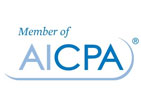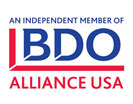Payroll is a mission-critical function — one that must be done even amid disasters or emergencies, such as:
Amber Cochran Saxon
Recent Posts
As COVID-19 vaccines become available, employers may require vaccines before employees return to the worksite if the employer believes that failure to be vaccinated constitutes a direct threat to other employees. With the virus still rampant, it's easily transmitted.
Posted in Payroll, HR & Benefits
If your remote employees live in the state where your business is located, you must follow federal employment laws plus your state's employment rules. But if your remote employees live in a different state from where you conduct business, you must comply with federal employment laws plus the labor laws for each state in which your employees reside. This applies to all areas of employment, including hiring, performance management, payroll, and employee benefits.
Posted in Payroll, HR & Benefits
Employers Have Questions and Concerns About Deferring Employees' Social Security Taxes

Posted by Amber Cochran Saxon on Sep 15, 2020
The IRS has provided guidance to employers regarding the recent presidential action to allow employers to defer the withholding, deposit, and payment of certain payroll tax obligations.
Posted in Payroll, HR & Benefits
Local income taxes are imposed by local governments, such as cities, counties, or school districts. They are used to fund various locally provided services, such as schools, parks, social services, law enforcement, transportation, and community-improvement programs.
Posted in Payroll, HR & Benefits
Until recently, employers in only a handful of industries had to provide significant reporting on COVID-19 transmission in the workplace. But as of May 26, new Occupational Safety and Health Administration guidelines require a much wider range of employers to determine whether employees caught the coronavirus at work or while performing work-related activities. If so, managers must record the illness on OSHA Form 300.
Posted in Payroll, HR & Benefits
No, there is no universal lifting of restrictions, but the CDC is looking forward to a time when every business can slowly start reopening. As the CDC explains: "It's important to continue to follow federal, state, tribal, territorial, and local guidance for reopening America." Its extensive guidance includes the need to develop a reopening plan:
Posted in Payroll, HR & Benefits
Since 2005, remote work has soared 173%, according to 2018 data from American Community Service. Whether you recently adopted this remote work model because of the pandemic or have been utilizing it for years, you should know your wage-and-hour responsibilities.
Posted in Payroll, HR & Benefits
Alabama is one of several states that does require employers to use a federal program designed to stop them from hiring people in the U.S. illegally. The Alabama legislature passed in both houses legislation prohibiting employers from knowingly employing unauthorized aliens. The law is known as the Beason-Hammon Alabama Taxpayer and Citizen Protection Act. The law requires all employers to enroll in and utilize E-Verify.
Posted in Payroll, HR & Benefits
As a business owner/manager, you have many processes and tasks involved in your day-to-day workload. Scheduling, timekeeping, payroll, etc...How about new hire onboarding?
Posted in Payroll, HR & Benefits

















